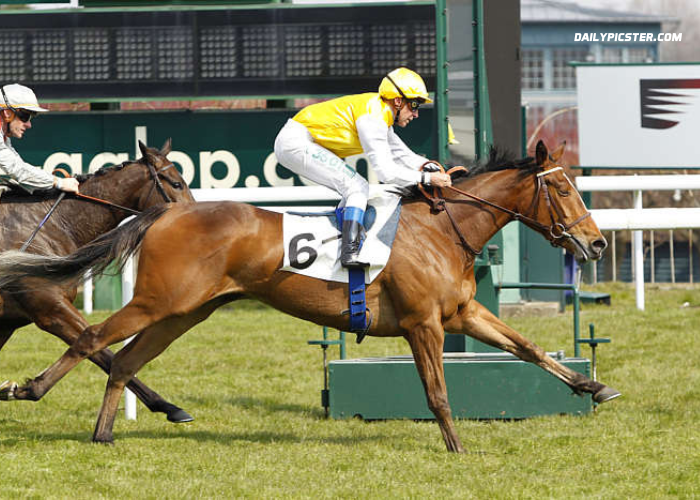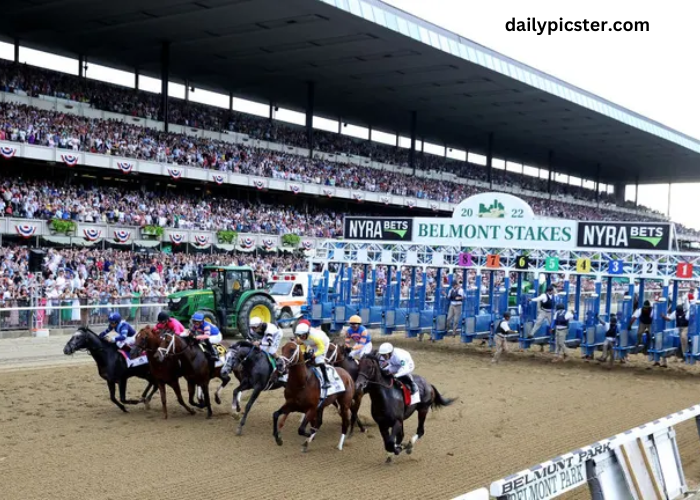Turf de France is a prestigious horse racing event that has captured the hearts and minds of millions around the world. Known for its rich history, thrilling races, and iconic horses, Turf de France celebrates the equine spirit and the art of horse racing. In this article, we will delve into the origins of Turf de France, explore its significance and popularity, understand the rules and regulations, learn about the different types of races, discover the famous horses and jockeys that have left their mark on the sport, examine the world of betting and gambling, and look towards the future of this beloved event.
History and Origins of Turf de France
The roots of Turf de France can be traced back to the 19th century when horse racing was gaining popularity in Europe. The French have always profoundly appreciated horses, and it was only natural that they would create their horse racing event. Turf de France was first held in 1863 at the Longchamp Racecourse in Paris, and it quickly became one of the most anticipated events in the racing calendar.
The inaugural Turf de France race was won by a horse named Gladiateur, ridden by jockey Louis Smith. This historic moment began a long and illustrious history for Turf de France. Over the years, the event has grown in stature and has become an integral part of French culture. Today, Turf de France attracts top horses, jockeys, and trainers worldwide, making it an international event.
The Significance and Popularity of Turf de France
Turf de France holds a special place in the hearts of racing enthusiasts and the general public. The event showcases horses’ athleticism and beauty and brings together people from all walks of life. For many, Turf de France is an annual pilgrimage, allowing them to witness the thrill of the races, soak in the electric atmosphere, and be a part of something extraordinary.
The popularity of Turf de France extends far beyond the borders of France. Each year, millions of viewers from around the globe tune in to watch the races, making it one of the most-watched sporting events in the world.
The allure of Turf de France lies in its ability to captivate the casual viewer and the die-hard racing fan. Turf de France has something for everyone, whether it is the glamour of the event, the skill of the jockeys, or the nail-biting finishes.
Rules and Regulations of Turf de France
Turf de France, like any other sport, has its own rules and regulations governing the races. The French racing authorities have put in place strict guidelines to ensure fair play and maintain the integrity of the sport. One of the critical regulations is the weight requirement for jockeys. Each horse is assigned a certain weight that it must carry during the race, and jockeys are required to meet this weight requirement.
Another important rule is the use of whips by jockeys. While the use of the whip is allowed in Turf de France, there are limitations on its use to prevent any harm to the horses. Jockeys are forbidden from excessively using the whip or using it in a way that may cause unnecessary distress to the horse. These regulations are in place to prioritize the welfare of the horses and ensure a level playing field for all participants.
Different Types of Races in Turf de France
Turf de France offers various races, catering to different distances, surfaces, and age groups. One of the most prestigious races in Turf de France is the Prix de l’Arc de Triomphe, commonly referred to as the Arc.
The Arc is a flat race run over a distance of 2400 meters and is open to horses aged three and older. It attracts the best horses from around the world and is considered the pinnacle of Turf de France.
In addition to flat races, Turf de France also features hurdle races and steeplechases. Hurdle races involve horses jumping over a series of obstacles called hurdles, while steeplechases require horses to jump over more giant obstacles such as fences and ditches. These races test the agility and jumping ability of the horses, adding an extra element of excitement to Turf de France.
Famous Horses and Jockeys in Turf de France History
Over the years, Turf de France has witnessed the rise of numerous legendary horses and jockeys who have become household names. One such horse is Sea Bird, who won the Turf de France in 1965 by a staggering six lengths. Sea Bird’s dominance on the track earned him the title of Horse of the Century, cementing his place in Turf de France history.
Another iconic figure in Turf de France history is jockey Yves Saint-Martin. Saint-Martin had a remarkable career, winning the Turf de France a record six times.
His exceptional riding skills and tactical awareness made him one of the greatest jockeys ever. Saint-Martin’s success in Turf de France has inspired generations of aspiring jockeys and continues to be celebrated.
Betting and Gambling in Turf de France
Turf de France and betting go hand in hand, with many enthusiasts placing bets on their favorite horses and jockeys. Betting adds excitement and anticipation to the races, turning Turf de France into a thrilling gambling spectacle. Various types of bets can be placed, ranging from simple win bets, where the bettor predicts the winner of the race, to more complex bets, such as exactas and trifectas, where the bettor predicts the exact order of the top finishing horses.
However, it is vital to approach betting responsibly and with caution. Gambling can be addictive, and it is crucial to set limits and never bet more than you can afford to lose. Turf de France encourages responsible gambling and provides resources for those struggling with gambling addiction. Enjoying the races and the thrill of betting while considering the potential risks involved is essential.
Turf de France Events and Championships
Turf de France is not just a single event; it is a series of races and championships held throughout the year. These events showcase the best horses and jockeys in the sport, allowing them to compete at the highest level. Some notable events in Turf de France include the Grand Prix de Paris, the Poule d’Essai des Poulains, and the Prix de Diane.
The Grand Prix de Paris is a prestigious race held at the Longchamp Racecourse open to three-year-old colts and fillies. It is a stepping stone for horses aiming to compete in the Turf de France. The Poule d’Essai des Poulains and the Prix de Diane are classic races for three-year-old colts and fillies. These races are seen as a test of the horses’ abilities and often serve as a precursor to the Turf de France.
Conclusion
Turf de France faces challenges and opportunities as it looks towards the future. The sport has evolved significantly since its inception, with technological advancements and changing societal attitudes shaping its trajectory. Turf de France continues to adapt, embracing innovation while staying true to its rich history and traditions.
The future of Turf de France lies in its ability to attract new audiences and engage the younger generation. Efforts are being made to make the sport more accessible and appealing to a wider audience, with initiatives such as digital platforms for betting and live streaming of races. Turf de France also aims to prioritize the welfare of the horses and promote a sustainable approach to racing.
Turf de France celebrates the timeless bond between humans and horses. It is a sport that combines athleticism, skill, and sheer beauty, captivating millions worldwide. As Turf de France continues to evolve, it will undoubtedly leave a lasting legacy and inspire future generations. So, whether you are a racing enthusiast or a casual viewer, tune in and experience the magic of Turf de France.



